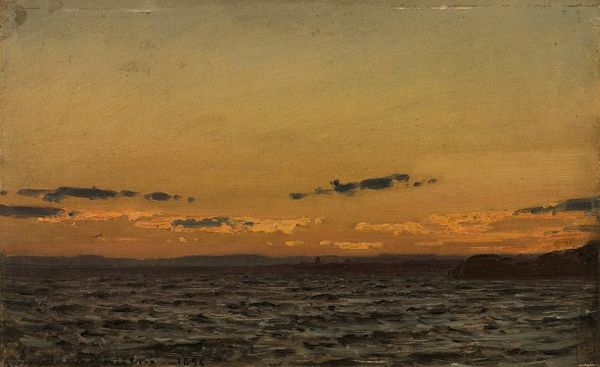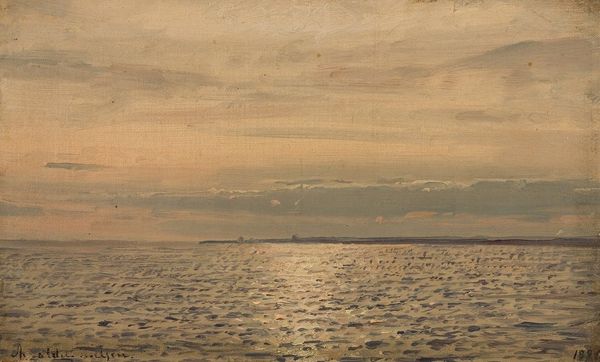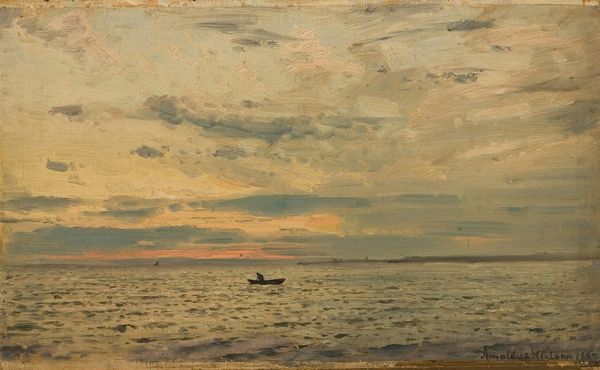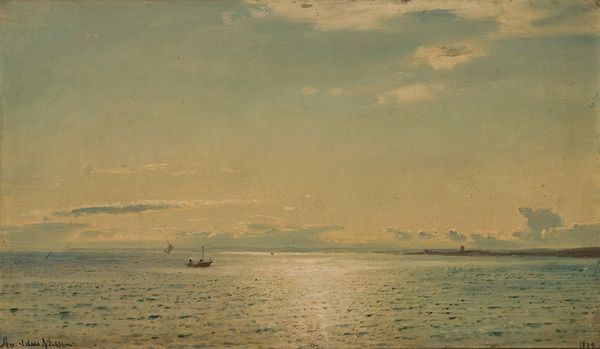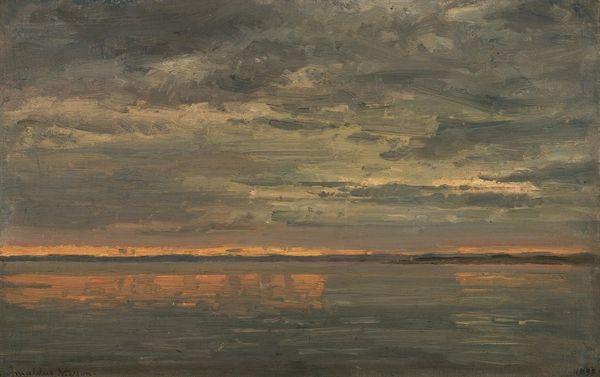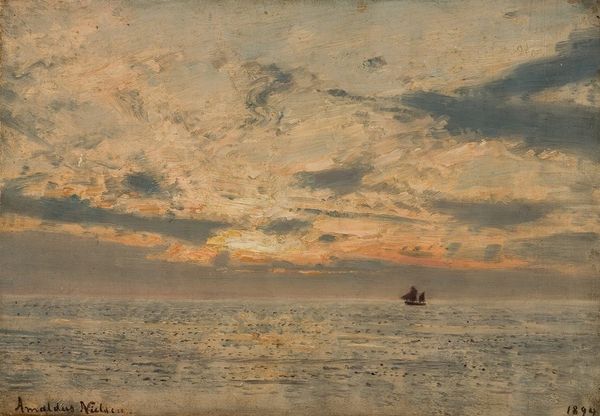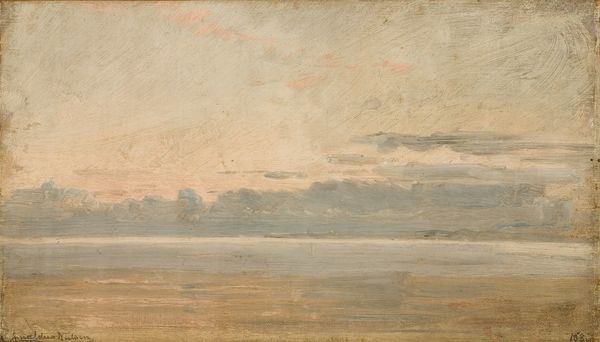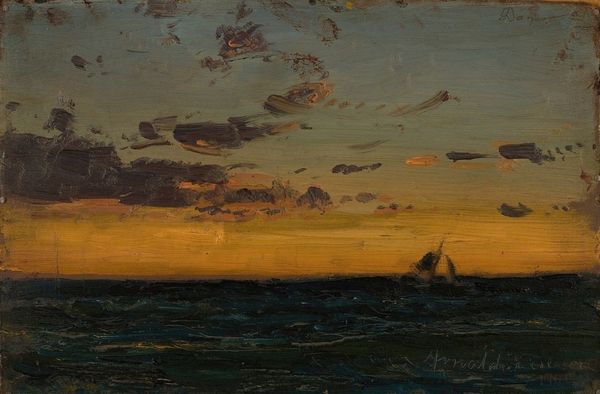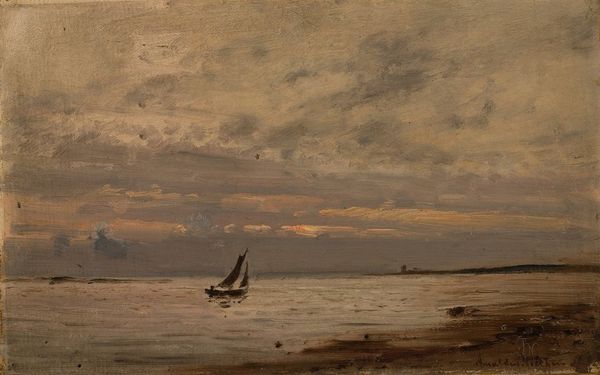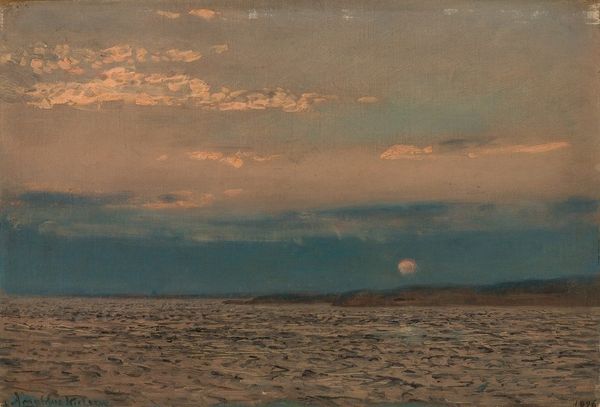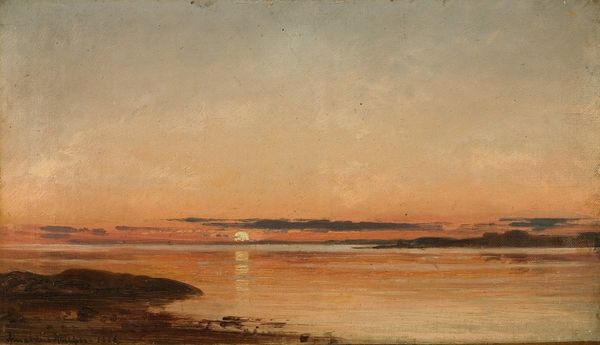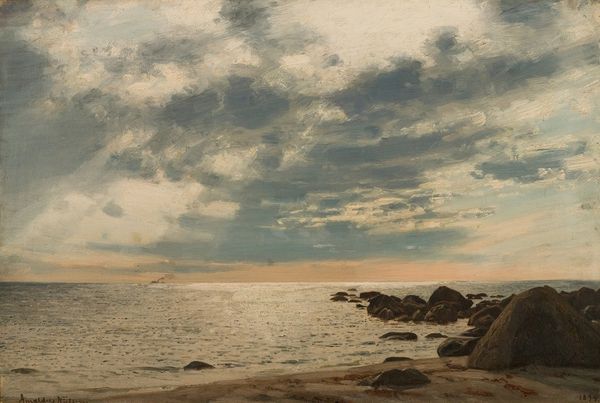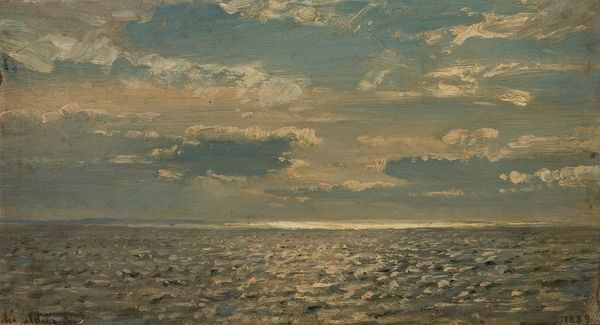
Copyright: Public Domain: Artvee
Editor: So, this is Amaldus Nielsen's "Ettermiddagsstemning," painted in 1889. It's an oil painting, and it gives me a very serene feeling. It looks simple, but the way the light hits the water makes it complex. What do you see in this piece? Curator: I see the hand of the artist wrestling with readily available materials to depict a common scene and elevate it to art. Consider the context: industrially produced oil paints enabled Nielsen's color palette, readily available canvases allowed him a surface. This wasn't about unique materials but a mastery of the mundane, making the sea a site of intense artistic labor. Editor: So, the industrialization of art supplies actually plays a role here? I hadn't considered that. Curator: Absolutely. Think about it – before this accessibility, landscape painting, particularly in this impressionistic style, wouldn't have been so prevalent. The mass production and distribution of paints facilitated plein air painting; artists could cheaply create outdoors. How does knowing that impact your reading of "Ettermiddagsstemning?" Editor: It makes me think about Nielsen not just capturing the beauty of nature but also participating in this broader shift in artistic production. This common scene wasn't actually as common before. It makes the artistic process way more obvious. Curator: Precisely. The seemingly simple, romantic image is underpinned by industrial means and shifts in labor. It also speaks to who gets to make art and who is the intended audience of art made rapidly accessible thanks to its means of production. Editor: This has made me think about all the hidden layers behind this calm sea. It is amazing. Curator: Indeed, viewing it through the lens of material culture enriches the whole viewing experience.
Comments
No comments
Be the first to comment and join the conversation on the ultimate creative platform.
